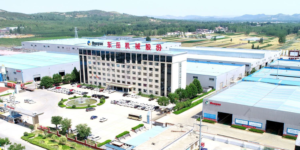— NetZero Roadmap
The net-zero roadmap sets out a pathway for AAC products to reach net-zero emissions by 2050 and the potential to make AAC products carbon negative through recarbonation, thereby absorbing more carbon dioxide from the atmosphere than they produce.
The roadmap aligns the EAACA and its members with
the objectives of the Paris Agreement to limit global
warming to 1.5°C and with policies to decarbonise
Europe’s building stock and construction sectors.
These sectors are key contributors to Europe’s
- The use of buildings accounts for 40% of Europe’s energy consumption and 36% of CO2 emissions.
- GHG emissions from material extraction, manufacturing of construction products, as well as construction and renovation of buildings are estimated at 5-12% of total GHG emissions.
With its excellent thermal performance and the
potential to achieve net negative CO2 emissions, AAC
has a role to play as a building material in helping to
reduce the life-cycle emissions of Europe’s buildings.
The roadmap is based on a review of opportunities to
decarbonise AAC production in Europe.
Importantly, it draws on the decarbonisation roadmaps
published by the Global Cement and Concrete
Association2, the European Cement Association
(CEMBUREAU)3 and MPA UK Concrete4 which put
European cement manufacturing on a credible
pathway to achieve net-zero emissions by 2050. The
roadmap from the European Lime Association (EuLa)5 is
expected to follow a similar decarbonisation pathway.
AAC emissions in Europe
CO2e emissions for AAC in Europe were 3.1 million tonnes
in 2021, based on annual production of 17.5 million m3
of AAC. Around 2.3 million tonnes of this were upstream
emissions from the cement and lime producers, and
0.4 million tonnes were from emissions derived directly
from the manufacture of AAC in factories.
Annual AAC production is expected to remain steady for
the forseeable future.
The net-zero roadmap for AAC products is outlined
in the chart below which includes 4% of unavoidable
emissions that cannot be removed though the cement
and lime roadmaps. Circularity and recarbonation have
the potential to address these and achieve negative
emissions but are not shown in the chart. These levers
are discussed in the following section.
Do you want to become a member of EAACA? Contact us!
News

We welcome a new Member – Dongyue Machinery Group
We are pleased to announce that Dongyue Machinery Co, Ltd. has recently joined the association and supports us in our work. Dongyue Machinery Co., Ltd.

Election Piotr Dauksza
At a recent meeting of the Executive Committee of the European Autoclaved Aerated Concrete Association (EAACA), the Committee unanimously elected Mr Piotr Dauksza as the

EAACA statement on the current RAAC topic in the UK
Following various media reports on the subject of RAAC in the UK, we as a European association would like to comment on this. Please find
